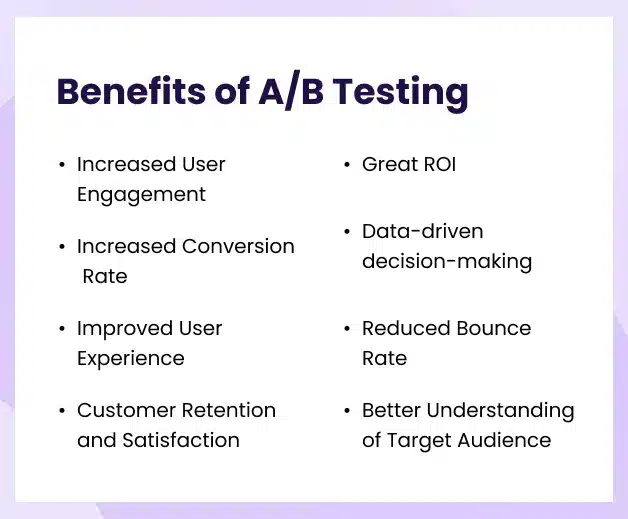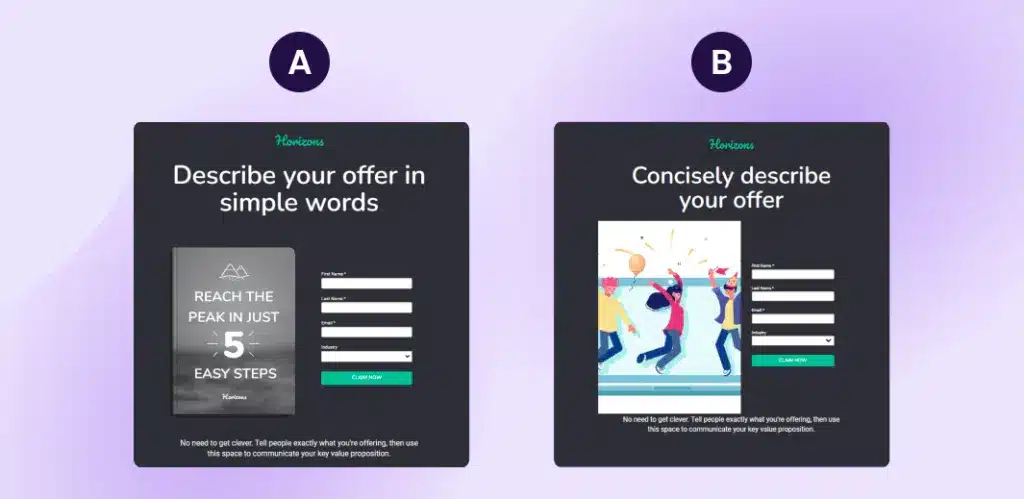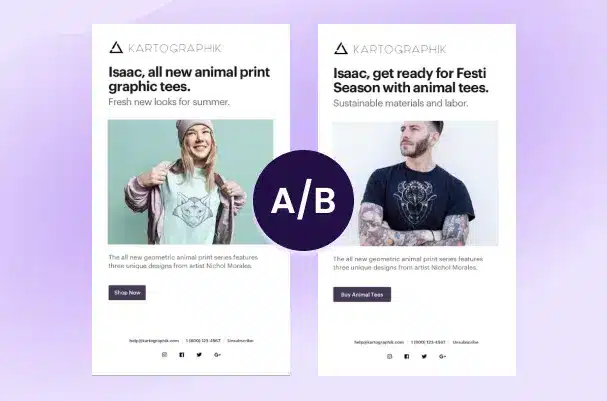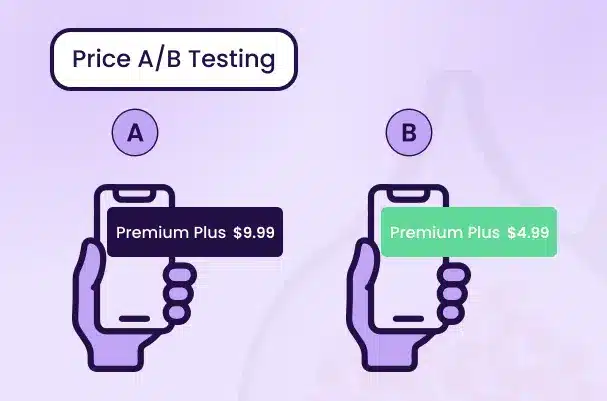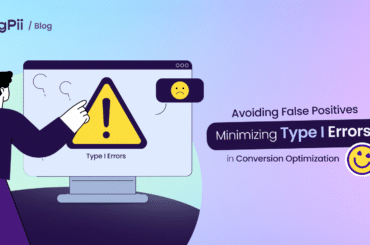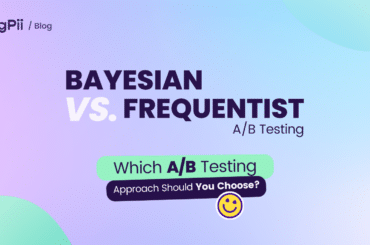In business, making the right decisions can mean the difference between success and failure. But with so many options and variables to consider, it can take a lot of work to know which path to take.
That’s where A/B testing comes in. By comparing two versions of a product or website, A/B testing allows you to see firsthand which option performs better.
With A/B testing, you can put your hypotheses to the test and make data-driven decisions about what works and what doesn’t on your website or product. So buckle up and get ready to learn about the benefits of A/B Testing.
What is A/B Testing?
A/B Testing, also known as split testing, is an experiment for comparing two or more versions of a website or web page, product, or email campaign to determine which version is more effective at achieving specific goals.
As a business owner, especially an E-commerce, you’ve repeatedly heard the term “A/B testing.” You may also have set -up and run some tests on your website because you wanted to increase and drive more sales or engagement.
A/B Testing goes beyond increasing conversion on your website. If well conducted, it can help you lay the foundation for future ideas and how to prioritize and implement them.
It’s crucial to the progress of your marketing strategy that you understand how users respond to variations of your site and eventually discover the variations that effectively resonate with users.
In this article, we dive into the benefits of split testing and why every business should consider it.
-
Definition of A/B Testing

Marketers and CRO experts use A/B Testing to measure the effectiveness of two or more versions of a website, campaign effort, or other marketing materials when driving conversions.
The goal of A/B Testing is to identify the version that leads to the desired outcome, such as increased conversion rates, higher engagement, or better user experience.
To do this, your site visitors are randomly divided into different groups, each being shown different versions of the website. The test results are then analyzed to determine which version performed better.
A/B testing is not limited to websites; you can also A/B test blog post headlines, header images, email campaigns, product features, etc.
What are the benefits of A/B Testing for Businesses?
Why should you bother with A/B Testing, though? After all, you’ve conducted comprehensive user research and usability testing while building/designing your product.
A/B Testing is a powerful tool for improving the effectiveness of digital campaigns, websites, and products. It allows you to make data-driven decisions about what works and doesn’t, rather than relying on guesswork or assumptions.
Some of the other benefits include:
-
Increased User Engagement
When you A/B Test your landing pages, email campaigns, marketing ads, and web page elements, you increase the likelihood of your users engaging with your product, content, or services. Users who resonate with your brand spend more time interacting with your products.
While A/B testing, you can also conduct surveys to get customer feedback on what they think about the version of your site that they are currently using. It’s as simple as adding a user feedback prompt while they have spent a significant amount of time on the site.
Customer data from the feedback can be used alongside the A/B test results to understand your users better.
-
Increased conversion rate
Businesses can make informed decisions about improving conversion rates by A/B testing different versions of a page, product features, and prices and measuring the results. For example, a business might test different headlines, calls to action, or layouts to see which version of the page is more effective at converting users.
-
Improved user experience
User experience refers to users’ overall satisfaction and enjoyment when interacting with your product or service.
A/B Testing can help you improve the user experience by making your product more intuitive and user-friendly. This could be achieved by optimizing the design, functionality, and usability during the A/B tests.
Additionally, A/B testing directly measures the impact of any changes you make so that you can ensure you’re creating an optimal result. It can effectively optimize the user journey and make it easier for users to achieve their goals on a website or app.
-
Customer retention and satisfaction
Have you ever wondered why you keep renewing your subscription to Apple Music, Spotify, or Netflix? It’s not because you like their logos or brand names. It is definitely because these brands have figured out what users want, and they are using that to keep them coming back.
Customer retention is what happens when customers are satisfied with products or services. They want to keep coming back, and with A/B Testing, you can optimize customer retention by identifying changes likely to keep your customers engaged.
-
Great ROI
A/B Testing can be a valuable tool for businesses looking to optimize their online presence and drive business success. It can help businesses identify and implement changes that are more likely to achieve business goals, resulting in a great return on investment (ROI).
-
Data-driven decision-making
If there was nothing like an A/B test, how do you think certain business decisions would be taken? Decisions will likely be based on a trial-and-error strategy, which can waste time and resources.
However, with A/B Testing, your business decisions are backed by data from the analyzed results of the test. You have a better understanding of your customers, and this reduces the risks of implementing decisions that can negatively impact your business.
-
Reduced bounce rates
When your website is fully optimized to ensure a seamless customer experience and improve user engagement, there is a reduction in bounce rates. A/B Testing lets you understand what your customers are looking for, and you can develop effective ways to present the information that addresses their needs or answers their questions.
-
A better understanding of the target audience
By analyzing the data collected from the A/B test, the business can better understand its target audience’s behavior, needs, goals, and challenges. You can optimize your website or product to resonate with your audience with this information.
A/B Testing Benefits
A/B Testing Ideas To Explore
Businesses can use several types of A/B Testing to compare different versions of a product or marketing campaigns. Some common types of A/B Testing include
-
A/B Testing of a website or landing page:
To conduct a split test on a landing page, you first need to create a control version of the page and one or more variations. These variations contain the changes you want to implement and test with your audience.
These changes could be the layout, design of the page to the content, and the position of different elements on the page.
Next, you need to determine a metric to measure the performance of each version. This could be the number of clicks on a call-to-action button or the amount of time users spend on the page.
When your test is complete, you can compare the performance of the original landing page and the variations using your defined metrics. Consider implementing the variation that performed well permanently on your landing page.
-
A/B Testing of email campaigns:
If you have ever received mail from an online store or a service provider and ended up subscribing to their service or clicking the link at the bottom of the email, then the email has achieved its purpose.
It’s safe to say that split testing must’ve played a significant role in the success of that email campaign, or the copywriter is very good at what they are doing.
A/B testing email campaigns involve sending one variation of your campaign to a subset of your subscribers and other variations to another subset of subscribers to determine which variation of the campaign yields positive results.
Many variables can be A/B tested in an email campaign, including the subject line, the email layout, the call-to-action, the copy, or the placement of images.
To conduct an A/B test, you’ll need to define your goals for the campaign, which could be increasing open rates or click-through rates.
Once you have your control and test groups set up, you’ll need to send the emails and track the results. You can create multiple email campaigns using a tool like Mailchimp and monitor the results using Google Analytics.
-
A/B Testing of marketing copy:
Many elements go into creating a marketing copy, but how do you create a solid copy that achieves its intended purpose?
A/B Testing is one of the most effective ways to find out what your target audience can relate to and ensure that your marketing efforts are effective.
Typically, the marketing team creates different versions of the marketing copy, each variation containing different headlines, subject lines, or copies. These variations should also be easy to mix and match since they address the same subject. For example, you should be able to use a headline from one variation in another variation.
A/B Testing allows marketers to make informed decisions about the most effective marketing copy rather than relying on guesswork or intuition. It is an important tool for optimizing marketing efforts and improving the return on investment for marketing campaigns.
-
A/B Testing of product features
A/B Testing can also be used to test different product features to determine which ones are most preferred by customers. This is useful when you have several features to add to your product and need to know which features your target audience would find most useful.
What are you trying to achieve with the product feature? Are you trying to increase usage, improve customer satisfaction, or drive sales? Identifying the goal will help you determine what features to prioritize, what metrics to track when testing, and how to interpret the test results.
-
Price A/B Testing
A/B Testing can also be used to test different product prices to determine the most effective in driving sales, maximizing profit, or testing the market’s willingness to pay.
Price A/B testing can be done when you want to launch a new product and choose between MVP vs MLP, when sales are low or when you’re about to test new product prices.
However, if you run a Shopify store, there are some important things to consider before A/B testing prices on your store. Since your product prices are directly related to product value, it’s important to avoid pitfalls that can cause you to lose out on maximizing profit.
Conclusion
Your users are the most important part of your product because without them, there are no sales or conversions, and you want to ensure that they like whatever it is you’re putting out there. Since you are not a mind reader, the effective way to understand visitor behavior and their response is by conducting A/B Testing.
There are many reasons why a business should always consider A/B Testing. It saves you time wasted implementing decisions that rely on guesses and intuition and increases the chances of achieving your business goals. Let’s look at some of the A/B Testing benefits discussed in this article.
- It helps businesses understand their target audience better
- When effectively implemented, it can help reduce bounce rates.
- It helps businesses make data-driven decisions, eliminating guesswork and reducing business risks.
- A/B testing has a great return on investment.
- It provides valuable insights on improving your website to ensure better user experience and engagement.

